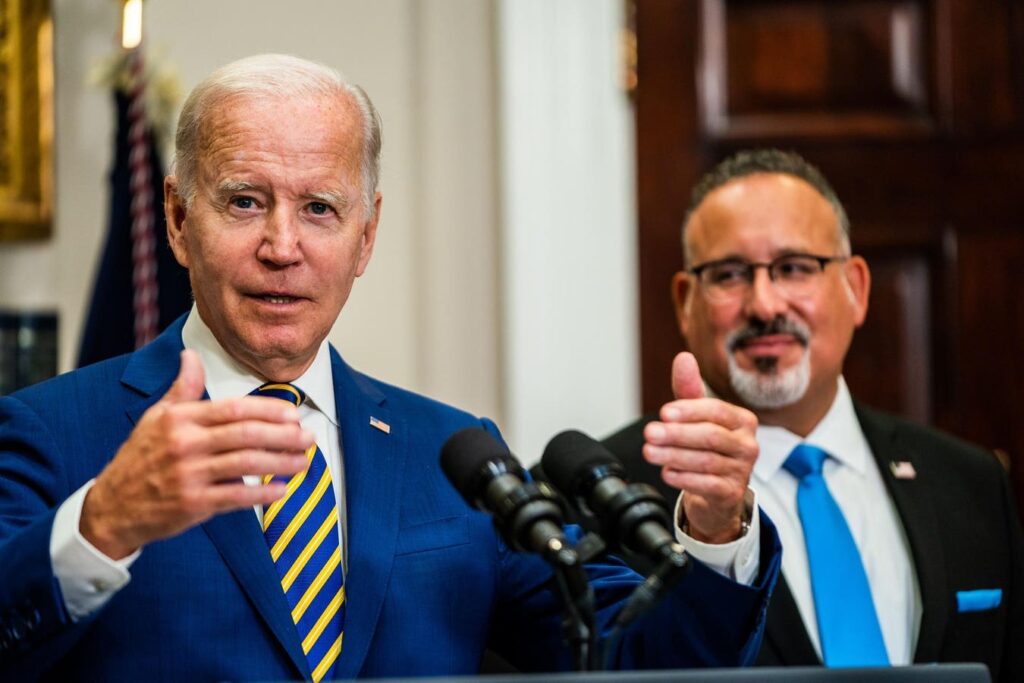On August 24, 2022, President Joe Biden addressed student loan forgiveness in the Roosevelt Room of the White House, shedding light on the significant policy changes initiated by the Education Department. The Secure and Accessible Vouchers for Education (SAVE) plan, launched the previous fall as an innovative income-driven repayment (IDR) program, aimed to alleviate the financial burden on borrowers by offering reduced payments and pivotal interest benefits. This plan quickly attracted over eight million borrowers, some of whom were transitioned from the older REPAYE plan. The Biden administration positioned the SAVE plan as the most affordable IDR initiative ever, suggesting it would create pathways for loan forgiveness ranging from ten to twenty-five years. However, the subsequent litigation by a coalition of Republican-led states posed a formidable challenge, as they argued that the Biden administration overstepped congressional authority by implementing this repayment plan.
In light of this legal dispute, the Eighth Circuit Court of Appeals issued an injunction in August, which halted the SAVE program and its associated benefits, including lower monthly payments and interest subsidies. This injunction has broader implications, extending beyond the SAVE plan to impede loan forgiveness mechanisms in several other IDR programs that were established under the same legal foundation. The Education Department clarified that due to the court’s ruling, while the SAVE plan itself was explicitly affected, the entire spectrum of IDR plans derived from the provisions established by Congress in the Higher Education Act of 1993 is now also at risk. This means borrowers enrolled in programs such as Income-Contingent Repayment (ICR), Pay As You Earn (PAYE), and REPAYE are similarly barred from receiving loan forgiveness, contributing to a sense of volatility within the education finance landscape.
The guidance released by the Education Department indicated that the injunction’s implications were not merely procedural but substantive, as it complicates loan forgiveness pathways germane to IDR plans. The framework for these plans mandated that repayments be tied to a borrower’s income over a set term of no more than twenty-five years, subsequently culminating in forgiveness of any remaining debt. However, the Republican-led challengers to the SAVE plan have focused on a legally nuanced distinction between ICR plans and Income-Based Repayment (IBR) plans, which were legislatively crafted to explicitly ensure forgiveness at the conclusion of the repayment threshold. The recent court ruling has lent credence to the argument that while forgiveness is mandated for IBR plans, it remains ambiguous for ICR-derived plans, thus creating confusion for borrowers navigating their options for loan repayment and forgiveness.
While student loan forgiveness under the IBR plan remains intact—much to the relief of its participants—the interim implications for borrowers in SAVE, ICR, PAYE, and REPAYE programs are severe. Those anticipating student loan forgiveness at the conclusion of their repayment period are currently placed in an interest-free forbearance until the legal issues are resolved. The Education Department’s new guidance further specifies that the complications introduced by the injunction may significantly disrupt expectations for borrowers in the IDR Account Adjustment program. This initiative was designed to provide retroactive credit to rectify longstanding issues with IDR plans, and it was expected to yield immediate discharges for eligible borrowers. However, with the injunction now in place, affected borrowers must continue in forbearance despite having made considerable payments that typically should have counted toward forgiveness.
Amidst the complex backdrop of ongoing litigation, borrowers seeking to transition to IBR to secure forgiveness upon reaching the requisite term may face hurdles related to IBR’s stricter qualification criteria and potentially higher payments. Unlike other IDR plans that provide various financial incentives and low monthly payment schemes, IBR can be more expensive due to the absence of generous interest benefits, leading to the scenario where a borrower’s loan balance could inadvertently increase from accruing interest. Furthermore, not all borrowers qualify for IBR; individuals with Parent PLUS loans or who don’t meet specific financial hardship criteria face exclusion from this repayment option. Thus, while switching to IBR may theoretically offer a path to forgiveness, practical barriers exist that could hinder many from benefitting from this seemingly straightforward alternative.
Overall, the legal entanglements surrounding student loan forgiveness plans have created an uncertain environment for borrowers navigating their repayment options. The Eighth Circuit’s injunction and subsequent guidance from the Education Department effectively underscore the precarious nature of education finance policy in America. As millions of borrowers continue to grapple with the implications of these regulatory changes, the administration’s ability to deliver on its promises regarding student debt relief is now shadowed by pending litigation and questions regarding legal authority. While proposals for reforming student loan systems frequently emerge, the actual implementation is significantly affected by external legal challenges that can stall progress and exacerbate borrower uncertainty, increasing the demand for more cohesive and stable educational finance legislation.

